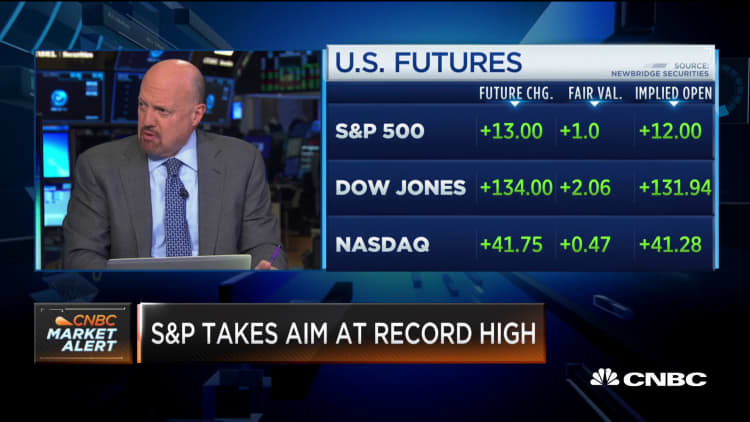
The S&P 500 found a new high when stocks opened Monday, but a more widely followed gauge of market activity lagged behind.
While the broader measure of U.S. companies broke 3,000 and was on its way to taking out its closing record for the 14th time this year, the Dow Jones Industrial Average remained about 450 points from its peak at the opening bell.
Blame for the most part rests on Boeing.
The troubled aircraft manufacturer has been a huge drag on the blue-chip index, knocking off more than 260 points just this month, according to FactSet. That's put a black eye on what otherwise has been a strong run for the Dow.
"I think everyone knows the Dow is Boeing, given the outsize weighting of Boeing in the Dow," said Wall Street veteran Nick Colas, co-founder of DataTrek Research. "It's just very hard to make that 30-stock index work when one of those stocks is under so much pressure."
Differences between the Dow and S&P
The two averages are about 5 percentage points apart in gains for the year. That difference serves as a reminder that what Wall Street traders watch on the floors of the big exchanges is sometime at odds with what many retail investors track.
The Dow, after all, has 123 years of history on its side while the S&P 500 is a relative baby, on the scene for just 63 years.

As such, when most folks on the street — lowercase "s" as opposed to that other "Street" where the market action happens — talk about the "market," it's the Dow to which they are referring.
"Most people understand the Dow. They're brought up with it," said Howard Silverblatt, senior index analyst at S&P Dow Jones Indices, which oversees the composition of both market measures. "The Dow was the major index, and it still is from a PR point of view."
There are two fundamental differences between them.
The most obvious is composition — the S&P 500, as its name implies, is made up of 500 of the biggest companies in the U.S. The Dow, on the other hand, holds just 30 members, chosen not simply by size but, at least in theory, as a cross-section of American industry.
The second difference is less straightforward, but can be critically important.
The S&P 500 is cap-weighted, meaning its constituents have a stronger bearing depending on the size of the company. Conversely, the Dow is a price-weighted index, meaning that their influence depends on their price, which is multiplied by a fixed number to determine the total index level.
That means some funny things can happen.
The Dow is up more than 4,000 points year to date, or about 16%. Of that total, some 972 points, or nearly a quarter of the gains, have come from two companies — Apple and Home Depot. Throw in Goldman Sachs, Visa, Microsoft and United Technologies, or one-fifth of the 30 companies in the index, and you get 2,056 points, or more than half the gain from just 20% of the companies.
On the S&P 500, that's not at all the case.
The index was up nearly 550 points year to date heading into Monday's trading, and the influencers had been far more broad-based. The five biggest contributors point-wise — Apple, Microsoft, Facebook, J.P. Morgan Chase and Amazon — have only been responsible for a fraction of that gain.
Of the two, the S&P is "more investable and easier to explain," Silverblatt said.
Indeed, there are dozens of exchange-traded funds that track the index's many industries and subindustries in an industry that now totals $4 trillion.
Despite a turbulent market year, most of those funds just keep tracking higher.

Correction: An earlier version gave an inaccurate description of cap weighting in the S&P 500.


